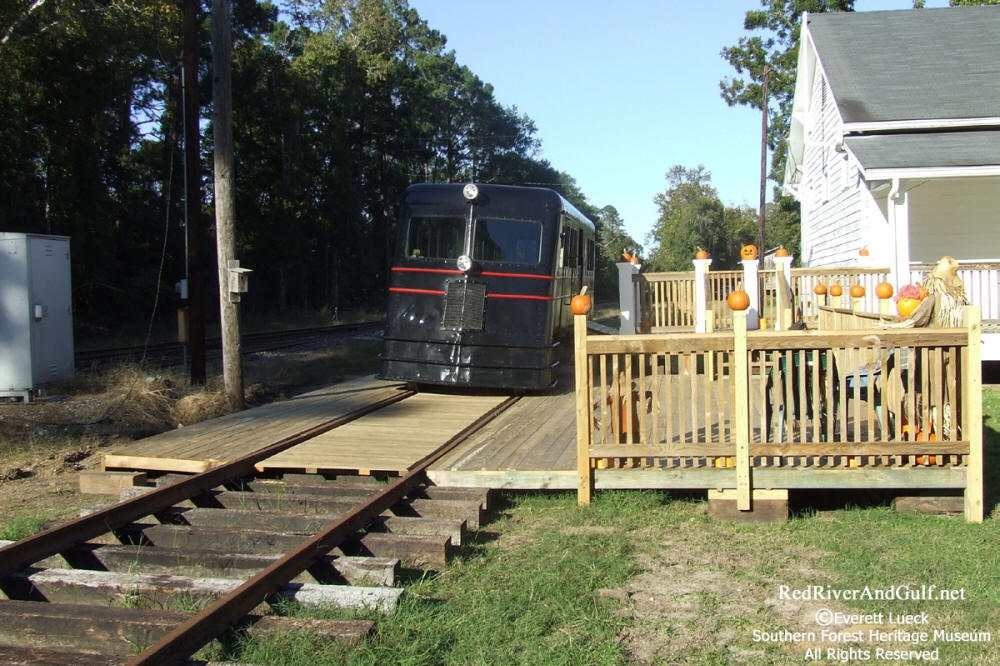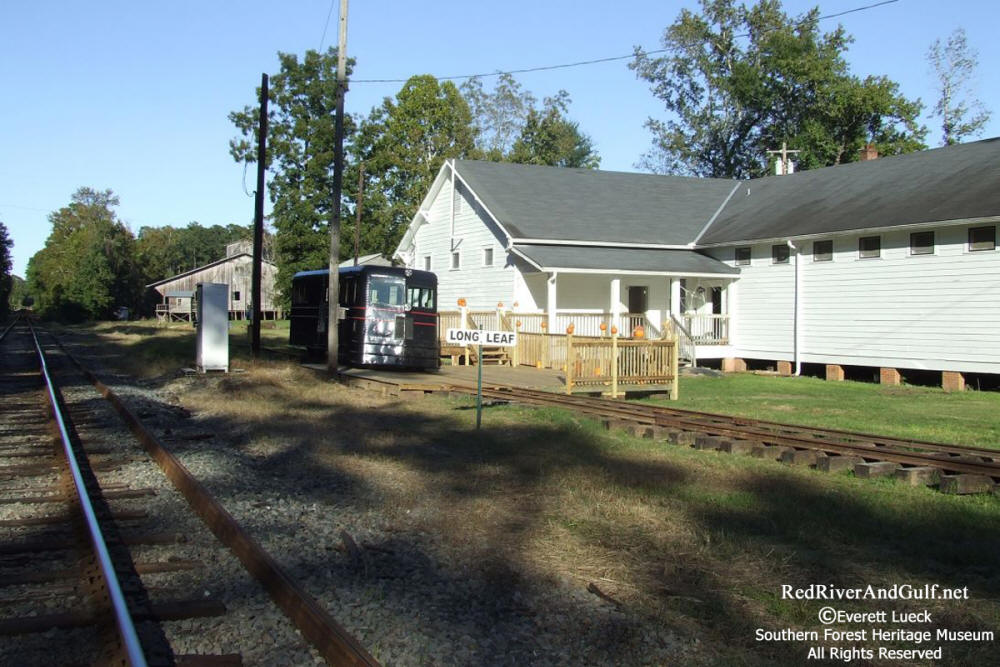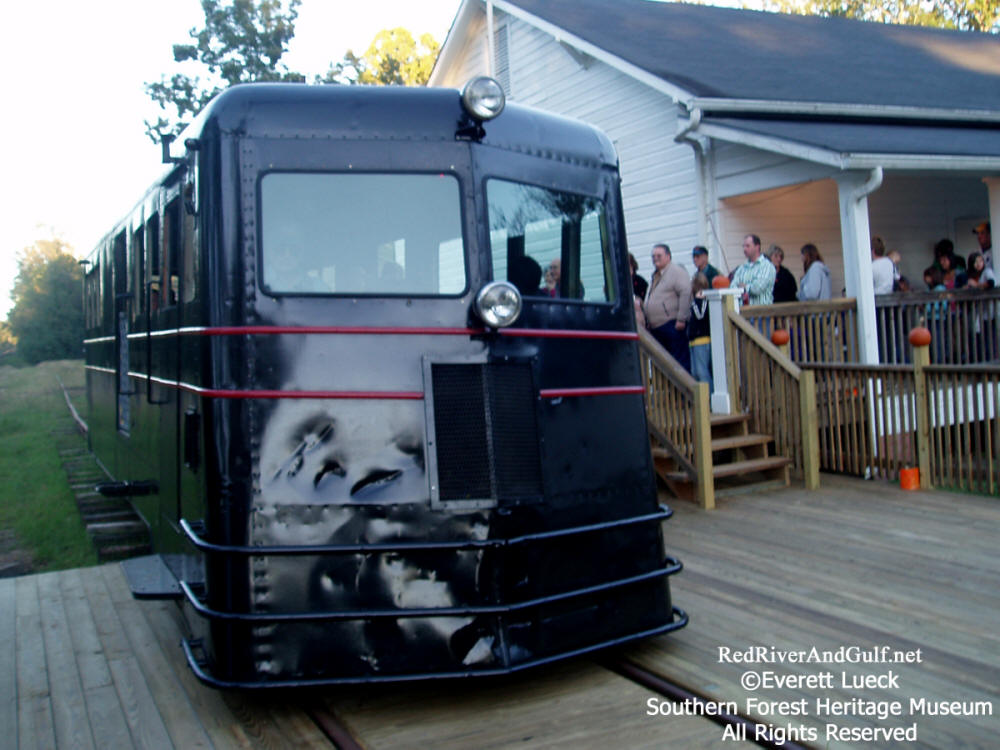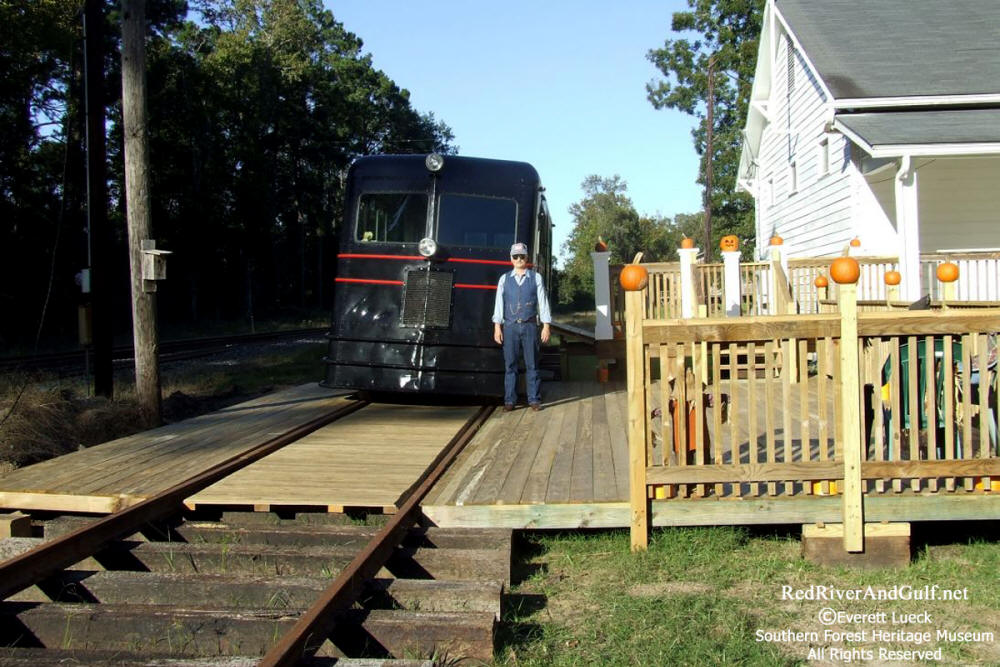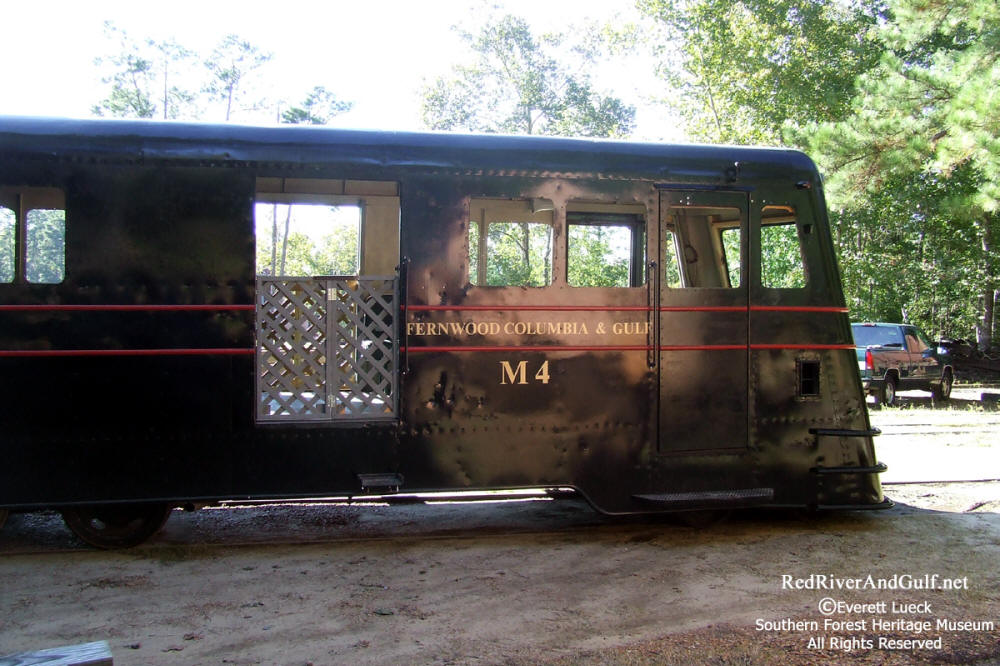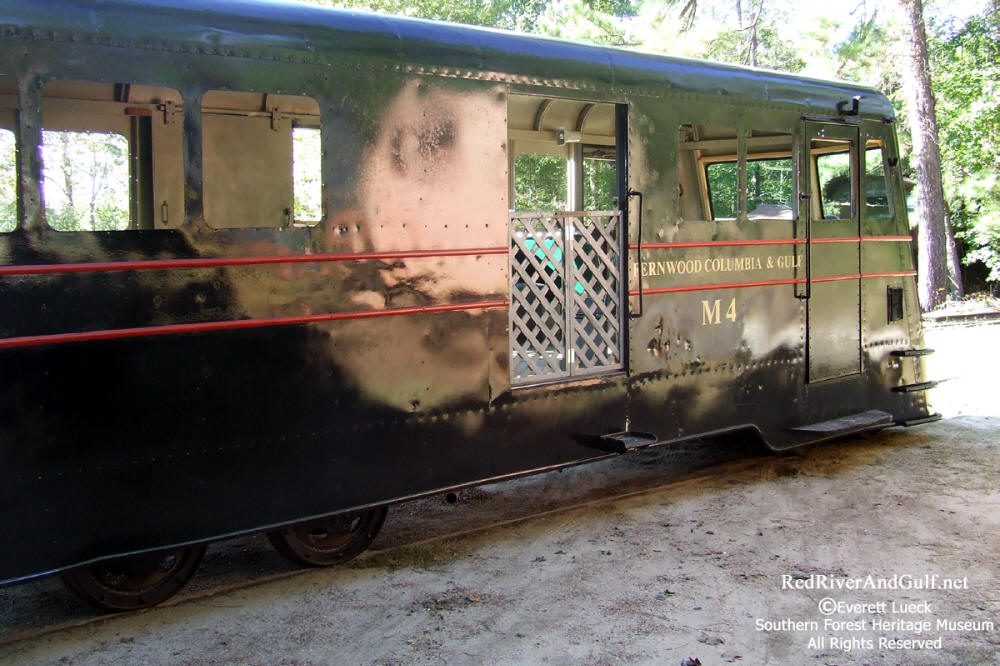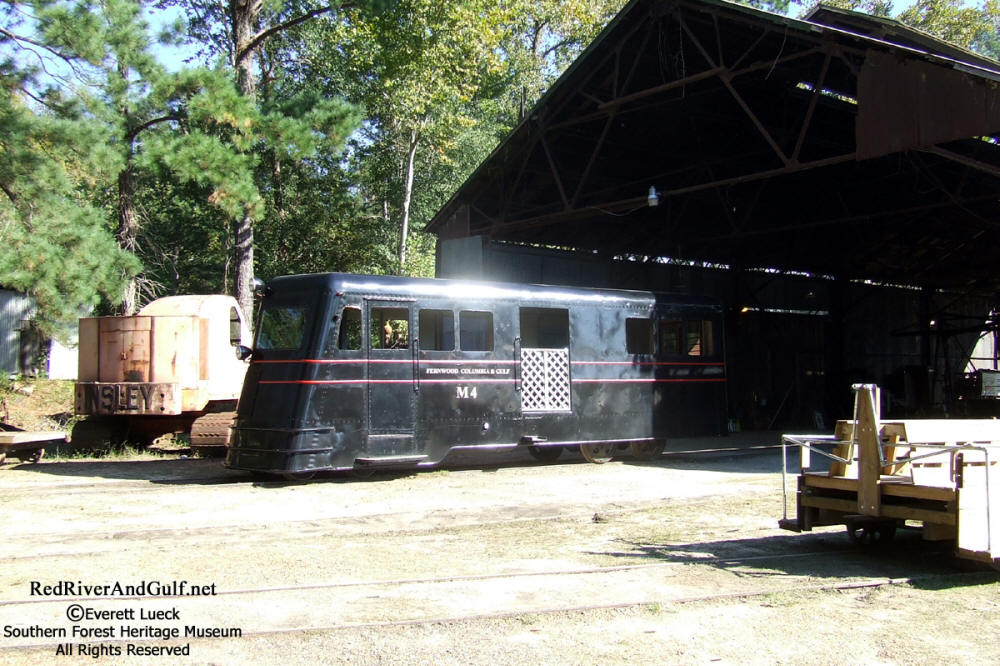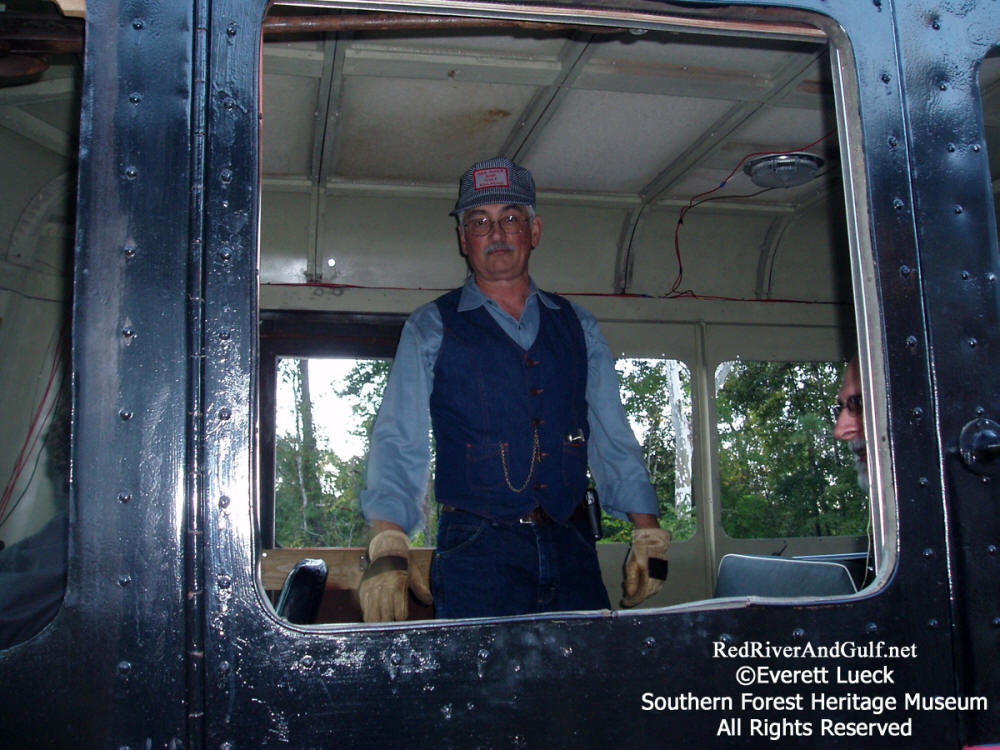|
The M-4 was built in the Fernwood,
Mississippi shop of the Fernwood Lumber Company for the Fernwood,
Columbia & Gulf Railroad and was completed in October, 1937. It was
built as a copy of motorcar FC&G M3 which was built by Kalamazoo Car Co.
of Kalamazoo, MI in 1935. Since the FC&G connected with the Gulf, Mobile
& Northern Railroad in Columbia (which was running the first stream
lined train in the south) the M-3 and M-4 were given “shovel noses” in
an attempt to look “modern”.
These motorcars could be operated by
a single crewman (Motorman), they were relatively simple to maintain,
and they ran on gasoline. Whereas as steam locomotive required 2 crewman
and was extremely complex to maintain. In addition, a full train
required 4-5 crewman to operate. So, when it was economically
infeasible to operate a steam-powered train, these types of motorcars
were an ideal replacement. If you are familiar with the Colorado narrow
gauge railroads, you've likely heard of the "Galloping Goose" of the Rio
Grande Southern. The "Geese" and the M-3 and M-4 were built for the same
reasons and performed the same job.
For more than 20 years, the M-3 and the M-4 made two daily round trips
over the 44 miles from Fernwood to Columbia and back, connecting with
the Illinois Central at Fernwood and the GM&N (later the GM&O) at
Columbia. When passenger service was abandoned, the FC&G used the cars
to haul their track crews.
In 1972, when the IC and the GM&O merged, the merged railroad was
required to purchase the FC&G and so it passed out of existence. The M-3
had been scrapped prior to that time, and the M-4 (along with the
remains of the M-3), was acquired by a railfan who later sold it in 1975
to Louis Saillard of Baton Rouge. The car was moved to Reader, AR with
the intent of running it on the Reader Railroad, and it was dismantled
for a complete rebuild. It stayed that way until 1998 when Mr. Saillard
donated it to the SFHM. However, it was not until 2009 that the museum
was able to bring the car to Long Leaf and begin its restoration (which
is not yet complete, as you can see). Part of the M-3 also survives on
the car, as the swiveling front truck is from the M-3 and installed on
the car here in Long Leaf.
It is built on a 1937 Ford truck
chassis, with its four rear wheels powered by a 1942 Ford Flathead V-8
as its 1937 engine failed during World War 2.
In service, the car had two sections, the front being the passenger
section (in front of the baggage doors) and the rear being for baggage.
In the front section the windows rolled up and down and there were
leather seats for 15 passengers, 3 on one side and 2 on the other, in 3
rows. The interior of the passenger section was paneled with painted
Masonite giving it a smooth appearance and a bit of sound proofing.
Separating the passenger section from the baggage section was a chain
link fence with a locked gate in the center. In the baggage section
there was a large safe bolted to the floor on the right side of the car,
which carried the US Mail. There were wooden benches along the walls for
the passengers which could not be legally carried in the front of the
car and any baggage and freight was piled on the floor between the
benches. There was no paneling in the baggage section nor did the
windows roll down and they were barred like those on the back door.
The operational restoration of the
M4 is nearing completion and, once complete, we will begin the interior
cosmetic restoration. If you'd like to get involved to give us a hand,
please contact us at:
Work-Session @ RedRiverAndGulf.net (no
spaces)
|




